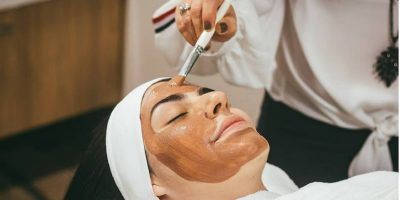
If you want to start properly taking care of your skin, you need to get the right products. But if you really want to make sure you’re getting the right products, you need to understand the different skin types and which one you have.
Once you have a clear grasp of your skin type, you can choose which products are optimal for your skin. It sounds much more intimidating than it is, and you don’t need to be a dermatologist to get it under control!
How Many Skin Types Are There?
Generally, the accepted number of skin types is five, though there is some debate as to whether one is just an extension of another, or if it’s its own skin type.
Each type of skin has its own issues, so don’t think that because you have the easiest type to deal you’ll get off the hook from skincare.
Here are the five types of skin. We’ll dig into the specifics of each skin type later:
- Normal: The most well-balanced skin type.
- Dry: Lacks the lipids needed to retain moisture.
- Sensitive: Prone to inflammation.
- Oily: Higher-than-average sebum production.
- Combination: A mix of multiple skin types.
You Have Normal Skin If…
Normal skin is, as the name implies, right down the middle. The skin produces just the right amount of sebum, which means it isn’t too oily or too dry.
Normal skin is identifiable by its fine pores, smooth texture, rosy color, and general lack of blemishes. If you were born with this type of skin, you are lucky, because you’ll have the easiest time taking care of your skin and looking your best.
You can just follow a basic skincare routine, and you’ll end up with great-looking skin. You have a great deal of room to experiment with products since your skin is pretty receptive.
You Have Dry Skin If…
People with dry skin produce less sebum than required, resulting in skin that, as mentioned, lacks the lipids needed to keep moisture.
Dry skin tends to look a bit dull and lifeless when compared to other types of skin. This is because the skin is often covered with a layer of dead skin cells. The skin also lacks some of the defensive measures of the more oily skin types, which can lead to increased sensitivity.
If you have dry skin, you’re going to want to focus on moisturizing your skin twice a day without fail. You’ll also want to use a gentle cleanser such as this one from Neutrogena. Avoid harsh scrubs or exfoliating products, as they’ll only add to your skin’s issues.
You Have Sensitive Skin If…
Sensitive skin is actually very similar to dry skin, but it’s even more prone to issues such as acne, rosacea, or contact dermatitis.
If you find that your skin matches the description of dry skin, but you find that a wide range of products tends to cause irritation, you probably have sensitive skin.
For your skin, you’re going to want to use as many gentle products as you can. Fortunately, there are lots of skincare products out there specifically designed to work with sensitive skin, so you’ll have a wide range of moisturizers and washes to choose from.
You Have Oily Skin If…
In direct contrast to dry and sensitive skin, oily skin tends to produce too much sebum, which leads to skin that appears shiny most of the time.
If your pores are large and your skin appears shiny all over (not just in the area around your nose and eyebrows), then you have oily skin.
Dryness is rarely a problem for people with oily skin. Rather than adding extra moisture to your face, you want to take some away. However, this doesn’t mean you should completely give up on moisturizing, as you still need to protect your skin. But you’re going to want to stick with light moisturizers, rather than heavy creams. Oily skin tends to be more prone to acne and other breakouts as well, so you’ll need to keep on top of washing your face and using anti-acne products.
You Have Combination Skin If…
The combination skin type is basically a mix of the above types. The most common form revolves around the t-zone (the forehead, nose, and chin), which is to say that this area is oily and other areas are dry or sensitive. While this is a common, if you have oily cheeks and a dry t-zone, you still have combination skin.
Unfortunately, this is a difficult type of skin to deal with because you’ll need a larger range of products to deal with each of your trouble areas. Basically, you’ll want to use products designed for oily skin on the areas that match the description of oily skin outlined above, and products for dry or normal skin on the appropriate areas.












